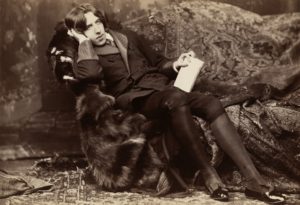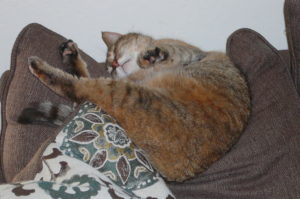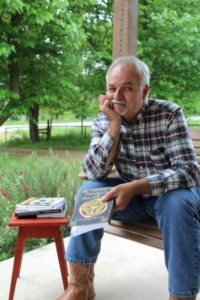Robert Boze
Mar 30, 2020 | Expert, Uncategorized
As professional editors and writers, Robyn and I have attended many conferences and writer events. Those, combined with the wide variety of edits we’ve done, have shown that many writers, especially first-time writers, have little experience with editing.
Questions we often hear are:
- Why do I need an editor?
- What is an editor going to do that I can’t do?
- What is a developmental edit?
- I have spell check, why do I need an edit?
- Why are there so many types of editing?
- What is proofreading?
- Why is editing so expensive?
And on and on and on.
In response, we’ve tried to address as many of these questions as possible in our Editing Untangled Workshop and related blogs.
***
Just as important, however, is understanding the overall editing process – the sequence in which each edit step is performed and what it is intended to accomplish.
In this blog we’ll briefly talk about each of the editing steps, when it should take place in the editing process and why. We’ll also explain what happens if it is performed out of sequence.
Some of the things we include may not normally be considered as part of the editing process but in fact, they are. For example, lets start with beta reading.
Beta Reading
For many authors, beta reading is not normally considered to be a part of the editing process, but it is. It’s actually a very important part of the editing process.
Beta readers can come in many forms: friends, family, a writing partner, a critique partner or a critique group. In short, anyone who you can get to read your work, at any stage that makes sense, and someone who will give you honest feedback.
(We should mention that you’ll hear terms like, alpha readers, review groups, beta critique groups and on and on. To us, whatever you call them, beta readers are simply the first to read your work before it is edited.)
Typically, there are no rules as to when beta reading can be done. It’s whatever you and your beta readers agree on and can start at any point in your writing.
For example, when Bob was writing his first book, he formed a beta reading group, consisting of four to five friends, who met at his house every Sunday morning for coffee and ice cream. (Yes, bribery plays a big role. Especially if your writing sucks: Which it will until your beta readers steer your story in the right direction.)
The first Sunday meeting was to agree on the rules and find out what flavor ice cream everyone liked. Then, once he had written several chapters, he passed them out at the next meeting. (Yes, the ice cream came with no obligations for this meeting.) From then on, each Sunday everyone would tell him how wonderful his writing was. (He wishes.)

Beta Read Meeting in Progress
Actually, the comments were more like: “Your hero fireman Shawn is the biggest woose I’ve ever seen.”, “Get real! No woman would ever let him jump her bones that fast.”, “It’s obvious you know nothing about horses. You’ve got her getting on the wrong side of the horse.” (Uh, there’s a right side and a wrong side???)
And on and on it went. While they read the next several chapters, Bob fixed the ones from the previous Sunday; after wiping the ice cream stains off their notes.
Two rules about beta reading that we think are important:
- You should never have to pay beta readers. Bribery is okay but pay is not.
- Beta readers should be reading the story for content only, not checking grammar, spelling, punctuation or formatting. Why? Because they’re not editors. Also, your story is raw, and while they’re reading the next part, you should be fixing what they just tore apart. So, all that effort is just a waste of time.
The key things you’re testing here are reader appeal and does your overall story make sense.
Developmental Edit
Similar to beta reading, developmental editing deals primarily with the story and its structure. It is a professional review of your overall story for structure, plot development, character development, scene descriptions, dialogue and other story elements that you’ve used to bring your story to life.
Obviously, developmental editing cannot be done until your story is complete. It also should be done by a professional editor, or at least someone who understands story structure and the role each story element plays.
Simply put, developmental editing concentrates on helping you develop and keep true your story, your characters and your scenes.
When we do a developmental edit we work with the author to provide guidance and feedback by critiquing the following areas:
- Structure
- Characterization/character arcs
- Goals, motivation, conflict
- Correct point of view
- Show don’t tell
- Plot
- Pace
- Genre specific and appropriate form
- Believable and genre specific dialog
- Balance between narrative and dialog
- Scene descriptions
Depending on how solid the story is, some line editing can be combined with a developmental edit. However, it makes no sense to do line editing on a story that’s been kicked back to the author for major rewrites.

If your story looks like this, it’s not ready for a line edit
Line or Copy Edit
If you’ve been following our blogs, you know that a copy or line edit is performed on what the writer believes to be a completed manuscript and is a line-by-line check of the author’s work.
Line editing can be light, medium or heavy, depending on what state the manuscript is in. A clean self-edited manuscript would likely need only a light line edit. Whereas a manuscript the writer is uncomfortable with will need a deeper, heavy line edit to help finish developing the story as well as fixing things.
Typically, a medium line edit, and its depth, will fall somewhere in between, depending on what the editor finds during their initial manuscript evaluation.
Things the editor will make sure are correct and proper for each type of line edit are:
- Light
- Spelling
- Punctuation
- Grammar
- Capitalization
- Number usage
- Abbreviations
- Typographical errors
- Omitted or repeat words
- Overall story accuracy
- Medium – A light edit plus:
- Consistency of American or British English, colloquialisms, accents
- Sentence construction and run on sentences
- Elimination of unnecessary words
- Syntax
- Proper and consistent tense
- Overused words and adverbs, clichés, purple prose
- Logic or plot holes
- Character/time inconsistencies
- Style sheet/guide adherence (if applicable)
- Heavy or Full – A light edit, necessary elements from a medium edit and suggestions for:
- Cuts
- Additions
- Rewrites
- Revisions to unclear passages
- Replacement words
- Rearranged sentences and scenes

Still not sure?
Here again it makes no sense to do a line edit on a manuscript that is not complete. Even in a heavy edit, it’s not the overall story that’s being changed, but parts of it being brought into line or clarified. Also, after each part is changed, the editor will check it for all the elements of a light and medium edit.
The point being that, once again, it makes no sense to perform a light or medium line edit on a changing story line.
Proofreads

Once the editing is done, it’s time for you to relax and let us do a proofread.
Proofreading is the final review on your completely edited manuscript. You know, the one you’ve hashed over, revised and tweaked on just about every page.
And, because of the changes, we need to go back and check for:
- Typographical errors
- Punctuation
- Grammar
- Spacing
- Print quality and font consistency
- Sufficient white space – margins, paragraph spacing, indenting.
It’s the final check to make sure your manuscript’s completely error-free and print ready.
Summary
So, why are we harping on this when most of it has been in our blogs and, by now, we’re quite sure you’re tired of hearing it?
Because our next edit request may likely be someone who wants us to proofread their manuscript while it’s being line edited. That way, they can save time.
Or, they’re still not happy with their story but they want us to do a line edit so they can see what type of errors they’re making.
Or, they want to know which of the following punctuation is correct.
- Oh no you don’t!
- Oh, no you don’t!
- Oh no, you don’t!
(Hint – They’re all correct. But without knowing the context it’s being used in, it’s impossible to say which one they should use.)
Or, the author wants us to do all the edits at once because they want to enter their story in a contest – next week.
These are the types of requests we get. And while we do our best to explain that doing things out of sequence often negates the purpose of the edit, we’ll continue to try work with you and help you stay within the edit process as best we can.
***
So, what should you the author do? Simple, take a few minutes to understand each of the steps in the edit process and try, as best you can, to have them done in the proper sequence.
Not sure of what kind of repeat errors you might be making or what kind of edit(s) your work needs? Ask us to have a look and do a sample edit. Unsure of something like the above “Oh no you don’t!” example? Give us a shout out and we’ll try and help put you on the right path.
Finally, while we’ve pulled off a few miracle edits recently, please allow us enough time to do a proper edit, especially if you’re a first-time author. It’s always our goal to make everything we touch the best it can possibly be! But that takes time.
Happy writing,
The Writing Allsorts Team
Bob and Robyn
***
Bob Boze lives in the South Bay area of San Diego and his writing partner, Robyn Bennett, lives in Blenheim on New Zealand’s South Island. Both are members of the San Diego Writers and Editors Guild, Romance Writers of America and New Zealand, as well published romance and non-fiction authors, editors, speakers and bloggers. Together they have over twelve published works and are collaborating on several more novels, short stories, articles and other works.
Bob and Robyn also offer a variety of writer and business services through their business website, Writing Allsorts. To learn more about them, their published works and the services they offer, go to https://writingallsorts.com/
Feb 3, 2020 | Uncategorized
Dublin Writers Festival Preparation
This blog may seem overly-simple but it is meant to be a friendly reminder of some of the things you should do before, during and after you attend the Dublin Writers’ Festival to make your attendance more enjoyable.

Session Selection
We suggest you start preparing long before you get there; as in, like now. Start by jotting down your current writing goals and interests. This should include what you’re working on at the moment, what’s coming up and things that you’re generally interested in. This will help you select which sessions you might want to attend.
For example, if you’re just starting a novel you might want to list sessions dealing with outlining your work, developing your story arc and creating character profiles. In the near future, you’ll likely move on to developing and enhancing scenes, dialogue and characters.
Finally, list things that might have nothing to do with your current projects but that you’re interested in learning about. Such things might be: screen writing, creating your own covers or marketing your books.
These lists can then help guide you to which sessions you definitely want to attend. Once you’ve identified these key sessions, look over the other sessions being presented to pick out other things you might want to attend.
Inevitably, you’ll end up having to be in several places at once and have to decide which sessions are more important to you.
Sign In
When you sign in:
Obtain a name tag, lanyard or whatever form of ID is being used.
Request a festival and hotel map or, if available, print them off the festival website before you go.
Locate and mark the rooms where each of your sessions will be.
Locate the nearest restrooms for each session.
If you want to take pictures or record a session, make sure it’s okay to do so. Also check with the presenter of each session to make sure you have their permission.
Ask if handing out business cards is acceptable.
Sessions
Arrive early, or at least on time, especially if you have unique seating needs due to mobility, hearing or sight difficulties. If you use a cane, walker, wheelchair, or scooter, select a seat where you can stow your walking aide nearby but out of the way.
Most presenters will tell you if it’s okay to ask questions during the session or if they want you to hold your questions till the end. If they don’t, ask which they would prefer.
What to bring or wear
- Pens, pencils and paper along with a pad or notebook
- Laptop or tablet computer
- Business cards
- Jacket or sweater
- Comfortable clothes and shoes for sitting and walking
- Water
- Throat lozenges such as Ricola, Tic-Tacks or cough drops
Networking
- Attend the parties and networking sessions each day of the festival
- Don’t be afraid to give out business cards (when allowed)
Personal Comfort
- Drink plenty of water
- Go for walks between sessions
- Eat well, but limit carbs
Be polite and helpful
- Robyn and I have covered a good part of the world in our travels and have found the people of Ireland to be some of the most welcoming, helpful and polite people we have run across. While in Ireland, follow their example. Be friendly, polite, and help others when you can.
- Whatever you do, be polite to speakers and presenters. They are there because they want to help writers grow and to share what they know. If you disagree with something being said, jot it down and approach them at the end of the session.
***

Relax, Enjoy, Have Fun, and Learn
Some things to do in Dublin related to writing
Dublin Writers’ Museum
Tons of bookshops
Chester Beatty Library tour (Part of the festival on Friday morning)
Trinity College Library
And lest we forget – Irish pubs
To quote a sign in an Irish pub in Hanmer Springs. New Zealand:
“Alcohol – Because no great story started with someone eating a salad”
***
Bob Boze lives in the South Bay area of San Diego and his writing partner, Robyn Bennett, lives in Blenheim on New Zealand’s South Island. Both are published romance and non-fiction authors, editors, speakers and bloggers. Together they have over twelve published works and are collaborating on several more novels, short stories, articles and other works.
Bob and Robyn also offer a variety of writer and business services through their business website, Writing Allsorts. To learn more about them, their published works and the services they offer, go to https://writingallsorts.com/
Dec 4, 2019 | Uncategorized
This article is written in the dialect of East Texas. A dictionary is available upon request at williamdavidellisauthor.com.
 Dreams can be caused by a lot of things. If you live in East Texas on a small farm and eat breakfast most mornings at a small café, the number of things contributing to vivid monster-manifesting dreams is huge!
Dreams can be caused by a lot of things. If you live in East Texas on a small farm and eat breakfast most mornings at a small café, the number of things contributing to vivid monster-manifesting dreams is huge!
So, needless to say, I had a dream. Woke up with cold sweats (could be attributed to the fact that my wife sleeps under a ceiling fan and has another oscillating fan blowing across her. and therefore me), but I think this dream was caused by something darker (like a hidden Lego in the middle of the night, or a dog who knows better but leaves a gift for his owner to step in on his middle-of-the-night trip to the potty). Yep, this one was mystical. It creeped up out of the foggy bottom near our house. Note, I did not say “soggy bottom” that is a whole different subject and is usually caused by the noncompliance of dietary restrictions. Yep, I think this dream crawled out of one of the old graves,(probably my ex-mother-in-law's) slid down the moss-covered gravestones of our local cemetery, slithered through the swamp, and then under the door and into my bed.
Hopefully, I have created anticipation. Maybe you are intrigued and thinking, “I wish that idiot would hurry and get to the dream.” Fine! Treat an old man with more wind than wisdom like that, but be warned …as you are, once I was, and.. Oh yes! As I am, so you shall be. Now back to the dream.
I dreamed that I was sitting in Jamie’s café in Moab, Texas, eating my standard fare of hot fresh cathead biscuits covered in sausage gravy when in walked the new reverend. Now, that is nothing to write on about… cept, this one had an aura! I mean a dark shadow draped around his shoulders like a python around a circus performer's neck.
I spit coffee and biscuit all over my friend Archie, then pretended to be hocking up a hair ball.. All the time screeching to myself, “I am not seeing this! Uh-uh, no sireee! Didn’t see that, nope!” So, I grabbed my fallen courage, tucked it back in my pants, wiped my mustache off, dried the spilt coffee off of Archie, blinked, and looked again.
Yep, it was there and hadn’t moved. As a matter of fact, it had become a great deal more vivid, and this time our eyes met. Slitted reptilian eyes glowered and then it stuck our its twitching forked tongue.
 Quite naturally, I choked again, but this time Archie ducked, and I hit Jamie, the proprietor instead. She shrieked and started beating me with a spare dish towel, cussing and yelling, words I hadn’t heard since the last time I made her mad.
Quite naturally, I choked again, but this time Archie ducked, and I hit Jamie, the proprietor instead. She shrieked and started beating me with a spare dish towel, cussing and yelling, words I hadn’t heard since the last time I made her mad.
But this time I was ready. I stood up, brushed the biscuit off my overalls, and looked that shadowy beast square in the backside. Seems the dark reverend had turned around to talk to a local parishioner and left me squared off with that thing's rear end. Needless to say, it was a sight easier to barer, and I did make out the critter's species. It was a dragon., a real life, fire-breathing, razor-clawed, straight-from-the-chest-of-drawers-of-hell dragon.
Then I woke up. The sun was breaking through the oak branches on the east side of our pasture, and it was time to get up. I ran through the shower forgot to turn the water on and stood there gaping. .Eventually I shuttered free from the trance and finally, I made it to my spot at Jamie’s café. My seat, my time, my coffee cup. I was starting to settle down. The first warm comfort food of fresh biscuits and gravy were easing my considerable fears, when the door opened, and the new reverend walked in.
My therapist says I should be all right, but I need to chronicle these dreams. The therapist hasn’t explained why our community has had a rash of house fires and cattle mutilations, and attendance has definitely improved at the church. Seems people are afraid not to go, and I.. well I have written some novels about it… Some call it fantasy.
 William David Ellis author of The Princess Who Forgot She Was Beautiful lives in Ben Wheeler Texas on a small farm. He is a beekeeper and raises blackberries. He has two masters degrees and one doctorate in theology. He has published five books, three of which can be found on Amazon. His first book Dragons and Romans is currently ranked #1 Dragons and Mythical Creatures ( free kindle) His wife is an English teacher, his daughter is an English teacher and his father was an English teacher, in spite of that he still writes.
William David Ellis author of The Princess Who Forgot She Was Beautiful lives in Ben Wheeler Texas on a small farm. He is a beekeeper and raises blackberries. He has two masters degrees and one doctorate in theology. He has published five books, three of which can be found on Amazon. His first book Dragons and Romans is currently ranked #1 Dragons and Mythical Creatures ( free kindle) His wife is an English teacher, his daughter is an English teacher and his father was an English teacher, in spite of that he still writes.
Buy The Princess Who Forgot She Was Beautiful now here!
Catherine Kullmann
Oct 29, 2019 | Action & Adventure, Historical, Political, Regency, Uncategorized

View of Brussels
I must apologise for the delay in continuing with this series. To quote Rabbie Burns, and as today’s post shows, “The best-laid schemes o' mice an' men/Gang aft a-gley.”
At the end of 1814, we left the exiled Napoleon on Elba. Across the Atlantic, on January 8th 1815, American forces defeated the British in the Battle of New Orleans, the last major battle of the War of 1812. On January 21st, the mortal remains of the guillotined Marie Antoinette and Louis XVI were transferred in a sombre procession to the royal crypt in Saint-Denis. The restoration was complete. The map of Europe could be re-drawn again and the victorious allies agreed to meet in Vienna to discuss the new borders.
Meanwhile, thousands of Britons had decamped for the Continent. Their reasons were mixed; some simply wished to travel again while others hoped to leave their massive debts behind and live abroad on an ‘economical plan’. They soon established their own enclaves in Brussels and Paris where they continued to live the same life as they had at home, mixing with the same people and founding such bulwarks of English society as clubs and libraries where they could be sure to remain among themselves.
At the beginning of March, with trade with the European continent open again, Britain’s ruling classes looked to protect the interests of the landowners by introducing the Importation Bill. This was the first of the so-called Corn Laws, designed to prevent the importation of cheap foreign grain, thus keeping their incomes at war-time levels. They happily ignored the fact that as a result, the price of bread would be at an artificially high level, a fact that did not escape the poorer classes. In the ensuing riots, the windows of White’s club were broken and parliament had to be surrounded by a protective cordon of soldiers.
All rioting ceased when the news reached England that Napoleon had escaped from Elba and was marching towards Paris. He had indeed returned with the violets. The Importation Bill became law without further ado and Europe awaited the next developments with bated breath. A contemporary source summarised Napoleon’s progress as follows:
A Conversation between Two Gendarmes, modelled on THE TIMES:
First Gendarme: What is the news?
Second Gendarme: Ma foi! the news is short.
The tiger has broken out of his den.
The Monster was three days at sea
The Wretch has landed at Frejus
The Brigand has arrived at Grenoble
The Invader has entered Lyons
Napoleon slept last night at Fontainbleu
The Emperor enters the Thuilleries this day.
On March 19th, Louis XVIII and his family hurried away from the Tuilleries, only some hours before the Emperor’s triumphant return. The English who had flocked to Paris now as hastily left it, many heading for Brussels.

The allies, happily ensconced in Vienna, were caught wrong-footed. Armies recently dismissed were hastily recalled and on April 5th the Duke of Wellington arrived in Brussels to take command, initially of the British forces but soon, as Commander-in-Chief, also of the army of the United Netherlands. Enriched and enlivened by the influx of officers, the Brussels social whirl continued alongside the preparations for war. Would Napoleon sally across the French border to attack the allied forces or would he remain in France, daring them to invade?
The Duchess of Richmond appealed to Wellington himself for advice as to whether her ball, planned for June 15th, might go ahead. “Duchess, you may give your ball with the greatest safety, without fear of interruptions” was his reply.
Byron captures best what happened next:
There was a sound of revelry by night,
And Belgium's capital had gathered then
Her beauty and her chivalry, and bright
The lamps shone o'er fair women and brave men;
A thousand hearts beat happily; and when
Music arose with its voluptuous swell,
Soft eyes looked love to eyes which spake again,
And all went merry as a marriage-bell;
But hush! hark! a deep sound strikes like a rising knell!
Did ye not hear it?–No; 'twas but the wind,
Or the car rattling o'er the stony street;
On with the dance! let joy be unconfined;
No sleep till morn, when Youth and Pleasure meet
To chase the glowing Hours with flying feet.
But hark! that heavy sound breaks in once more,
As if the clouds its echo would repeat;
And nearer, clearer, deadlier than before!
Arm! arm! it is–it is–the cannon's opening roar
Napoleon had ‘humbugged’ him, as Wellington admitted to the Duke of Richmond, sending Ney to attack the British and Dutch-Belgian forces at Quatre Bras while he himself forced the Prussians to retreat at Ligny. But even as the wounded from these encounters were brought to Brussels, the Allied and French armies marched towards Waterloo, a small village south of Brussels on the far side from Brussels of the Forest of Soigné.

Overnight, regiments assembled on the Place Royale before marching out of Brussels, past the long procession of farm carts coming to market as usual. As one observer put it, After the army was gone, Brussels indeed seemed a perfect desert. Every countenance was marked with anxiety or melancholy—every heart was filled with anxious expectations….At about three o’clock [on the 16th], a furious cannonading was heard.
From then until the evening of the 18th, the residents of Brussels were torn between the hope of victory and fear of defeat. Some fled immediately towards Antwerp while others remained but prepared for instant flight. One after the other, the dreadful reports arrived: The Prussians had retreated, the Highland regiments that had been piped out of Brussels only that morning had been slaughtered, Wellington had been defeated; the French were at the gates…Every hour only served to add to the dismay.
On the night of the 17th, a violent thunderstorm came on, followed by torrents of rain which during the night, when the army were laying unsheltered upon the field of Waterloo, never ceased a single moment. On Sunday [the 18th] the terror and confusion [in Brussels] reached its highest point.
Meanwhile, on the plain of Waterloo, Wellington and Napoleon set out their armies as calmly as a grandmaster might dispose of his chessmen were he allowed a free hand in their positioning. It was mid-morning before the battle commenced, perhaps because the ground was too wet to allow the artillery to move its guns. But soon about two hundred thousand men were engaged in deadly combat. The battle waged all day until, near sunset, the invincible Imperial Guard was forced to retreat causing the surviving French to flee. The battle was over, the allies under Wellington had won the day, Napoleon was finally defeated, but at what cost?

The story of the battle is too well known for me to go into it in depth here. I have done this in my novel, The Murmur of Masks. For now, let us leave the last word to Byron.
The earth is cover’d thick with other clay,
Which her own clay shall cover, heap’d and pent,
Rider and horse,—friend, foe,—in one red burial blent!
Sep 26, 2019 | Uncategorized
Sep 7, 2019 | Expert, Uncategorized
Adding Visual Impact to Your Story
Part VI – Adding Sex and Humor to Your Story
Adding sex scenes or introducing humor into your story can greatly enhance it. Or, they can help flush it down the toilet.
Let’s start with sex.
Is it okay to put sex scenes in your story?
That depends on several things.
- How adept are you, the author, in describing a sexual scene?
- Does it fit comfortably with your story and character images?
- How appropriate is it for your target age group?
- How will it be received and perceived by your readers?
- And finally, does it meet any publisher’s or seller’s restrictions?
For us, it’s a “Yes, sex is definitely okay in a story”. Now, we’re going to add a lot of: “Only if’s.”
What works and doesn’t
Let us first comment on what we’ve seen others do that we thought didn’t work.
Don’t try and play it too safe. If your couple is going to make love, have them make meaningful love.
Let their touching, petting and actual love making express their love and feelings for each other. If you try to avoid being graphic, the scene is going to lose its meaning.
On the opposite end of the spectrum, don’t be too graphic. This is a story, not porn. Make the scene realistic and meaningful but not too explicit.
Less is more
If you’re going to add a sex scene, use the reader’s imagination as much as possible. Lead them to where you want the scene to go but don’t take it there. Let them get there on their own. For us, less has always been better where a sex scene is concerned.
Undress your couple in a provocative way. Describe the trail of clothes they left. You’d be surprised how much you can say just by painting a picture like the one below.

Next, lead them to a bed, a couch, a wall, or table and leave them locked in a passionate embrace. Your reader will fill in the rest. And, trust us, they will do it better than any words you write can. Especially if you lead them to someplace other than a bed. Remember, there’s an unspoken message and image in where you lead them.
Keep your characters in character
Be certain the scene you paint and the characters’ actions fit the characters you’ve created for your reader. If your male MC is only 5’ 8” tall, don’t have the female MC amazed when she sees he’s hung like an elephant. Unless of course she’s noticed early on that his jeans don’t fit quite right.

Also, if he’s been gentle and caring, keep him that way. Contrary to the belief of some, most people don’t change when they lose their clothes.
Be tasteful
Make sure your sex scene is done tastefully and that it fits comfortably into your story line. Don’t just dump them into bed on page three. Let them get to know each other and the reader get comfortable with who they are and their feelings for each other. Finally, be sure the scene’s appropriate for your target age group. If your books are aimed at teens, back off on the explicit descriptions. Make them age appropriate. (Yeah, I know, teens these days know more than we do but it’s not your place to get them there.)
We’ll end with a few Only If’s and several No-No’s.
- Never exploit one sex or the other in any way.
- Always make it obvious that it’s consensual, and enjoyable to both parties.
- No drugs or violence, ever!
- Make sure the partners are clearly past the age of consent.
- Finally, unless they’re trying to start a family, make sure they have safe sex. Especially if they only recently met and don’t know if their partner is disease free or who they might have been with.
Remember, no matter what genre the story is in, making love should not just be a physical act. It should enhance and convey to the reader the love, trust and feelings they have for each other.
Oh, and happiness too!

Yeah, we know, sex may have different connotations in genres other than romance and love stories, but we still think treating your sex scenes with the rules we’ve noted is your best bet.
One final point. As soon as you put a sex scene in, stand by for the seething reviews to roll in. No matter how tasteful and careful you are with your love scenes, you will surely offend someone. Actually, a few someones. So, be ready.
***
Adding humor to your story
Everyone loves a good joke and every author loves it when a reviewer says their story made them laugh out loud: Better yet, that they were embarrassed when they looked up and everyone was watching them because they were laughing so hard.
But humor is one of the hardest things to pull off in a story. Like sex, it can also make or break a story and many of the same do’s and don’ts apply.
What works and doesn’t
Make sure your humor will be understood by your readers. So often authors use “in jokes” or descriptions that leave the reader shaking their head with no idea that it was supposed to be funny.
You don’t need to write something funny or tell a joke in every paragraph or on every page. But, once you introduce humor into your story, your readers are going to expect that, from there on, it will continue.
The best way to insert humor is to describe something funny or have one or two characters convey the humor through dialogue.
Pick the humorous characters early and set them up with fun personalities. We’ve seen cases where they’re bashful, then come out of their shell later, but that’s more difficult to pull off.
Although they can, they don’t need to tell jokes or funny stories. Snide comments will do just fine, and even those can be scattered.
Let the sense of humor from these characters draw out humorous responses from others.
Less is more
Slip in subtle comments or funny scenes where they are least expected and from whom they are least expected.
Funny scenes tend to work best when they’re described by someone who wasn’t expecting them.
If you have a joke you want to work in, set a scene up so your character can tell it: At a party, in a bar, at a meeting, in response to something someone else said.
Keep your characters in character
Never go out of character. Keep the humor in line with the character’s image that you’ve built.
If your characters sense of humor develops slowly, ease them into it. Don’t have them all of a sudden throwing out funny responses or cracking jokes.
If your characters are introverted, don’t curse or drink, don’t have them telling sex or bar jokes or jokes with curse words.
If a character is always adding their two cents, use them to throw in funny remarks. This, and responses to them, is a great way to ease humor into your story.
Be tasteful
Remember your characters are people and they have feelings.
Don’t pick on nationalities, personal traits, disabilities or anything else that would embarrass someone.
Don’t ever demean anyone.
Avoid sex jokes; it’s almost impossible to make them tasteful.
***
Create your own funny scene whenever you can

That’s our opinion on sex and humor. What’s yours? When it comes to sex, are we too prudish or not prudish enough? On humor, did we miss ways to work it into your story?
***
Bob Boze lives in the South Bay area of San Diego and his writing partner, Robyn Bennett, lives in Blenheim on New Zealand’s South Island. Both are published romance and non-fiction authors, editors, speakers and bloggers. Together they have over twelve published works and are collaborating on several more novels, short stories, articles and other works.
Bob and Robyn also offer a variety of writer and business services through their business website, Writing Allsorts. To learn more about them, their published works and the services they offer, go to https://writingallsorts.com/







 Dreams can be caused by a lot of things. If you live in East Texas on a small farm and eat breakfast most mornings at a small café, the number of things contributing to vivid monster-manifesting dreams is huge!
Dreams can be caused by a lot of things. If you live in East Texas on a small farm and eat breakfast most mornings at a small café, the number of things contributing to vivid monster-manifesting dreams is huge! Quite naturally, I choked again, but this time Archie ducked, and I hit Jamie, the proprietor instead. She shrieked and started beating me with a spare dish towel, cussing and yelling, words I hadn’t heard since the last time I made her mad.
Quite naturally, I choked again, but this time Archie ducked, and I hit Jamie, the proprietor instead. She shrieked and started beating me with a spare dish towel, cussing and yelling, words I hadn’t heard since the last time I made her mad. William David Ellis author of The Princess Who Forgot She Was Beautiful lives in Ben Wheeler Texas on a small farm. He is a beekeeper and raises blackberries. He has two masters degrees and one doctorate in theology. He has published five books, three of which can be found on Amazon. His first book Dragons and Romans is currently ranked #1 Dragons and Mythical Creatures ( free kindle) His wife is an English teacher, his daughter is an English teacher and his father was an English teacher, in spite of that he still writes.
William David Ellis author of The Princess Who Forgot She Was Beautiful lives in Ben Wheeler Texas on a small farm. He is a beekeeper and raises blackberries. He has two masters degrees and one doctorate in theology. He has published five books, three of which can be found on Amazon. His first book Dragons and Romans is currently ranked #1 Dragons and Mythical Creatures ( free kindle) His wife is an English teacher, his daughter is an English teacher and his father was an English teacher, in spite of that he still writes. 









